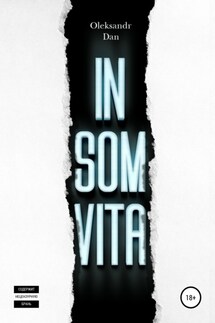Insomvita - страница 23
Amanda stopped and glanced at Trevor.
“So, do you like to read? What do you read in your free time?”
“You know, I read a lot when I was a kid and as a teenager. I even found something beautiful in Walter Scott’s boring descriptions of landscapes and nature, if I remember correctly. Now, I am mostly into historical research. Unfortunately, I don’t have too much time to read books.”
“If you like to read,” Amanda continued, “then you have developed the ability to think figuratively and the desire to perceive information. Avid readers are very high up on the hypnotic susceptibility scale. Some of them not only visually imagine everything they read, but also can anticipate dialog, scenes and even plot lines. All of this is also visual.”
“Well, I am not so susceptible as to be able to predict future scenes when I read,” retorted Trevor. “Although, you are right; when you read, your mind does form certain images. And I agree that a writer can inspire a reader to experience certain feelings. It is normal and natural, for the most part. But I still think a hypnotist suggesting certain actions or non-existent situations is an outright fraud.”
“Why? I will also tell you that experienced psychologists can provoke not only certain thoughts, but also images during a hypnosis session. In some cases, implantation of invented real-life situations is possible in order to block or replace some painful memories that affect a person’s psychological condition.”
“So, you are saying that a hypnotherapist provokes dreams and can implant artificial memories about the past?”
“Exactly! Moreover, during a hypnosis session, the patient does not perceive them as the past, but as reality. It is also possible to implant a wholly invented life-line, and the hypnotized person will also perceive it as reality. I’ve had extensive experience with such hypnotic manipulations, resulting in a positive trend of psychological recovery of the patient. This, however, is possible, as I’ve already told you, only with those who are highly susceptible to suggestion. By the way, based on my experience, they have the most vivid, colorful and very detailed dreams, regardless of whether they are their own or suggested.”
Amanda paused and suddenly asked: “What kind of dreams do you have, Trevor – black and white or color?”
Trevor thought about it. He hadn’t thought about it for a long time. Amanda’s question forced Trevor to look back to his childhood, and his memory created a small puzzle from the distant past out of several pieces of long-forgotten childhood impressions.
It happened on the day he turned twelve.
Trevor’s father, a well-known architect, was designing one of the tallest hotels in Thailand. His wife and son had moved to live in Hong Kong. It was the day Trevor’s family celebrated his birthday. The celebration ended with an evening gondola ride along Bangkok's canals.
The boat was long and narrow and big enough only for a few people. A yellow cloth stretched over it to protect passengers from the sun. A kerosene lamp sat in the rear of the gondola while another dangled from a long pole at the bow, lighting the way ahead.
It was close to midnight, but nobody wanted to return to the sweltering heat of the hotel. More lamps were lit on the boat; the conversation flowed. Trevor had been placed on the bottom of the hull next to his father and had fallen asleep. He dreamed that he was sailing on a large pirate ship on a stormy sea. The periodic splashes of water on his face made his dream seem more real. He was smiling in his slumber. Trevor remembered the day, full of fun, gifts and games.






